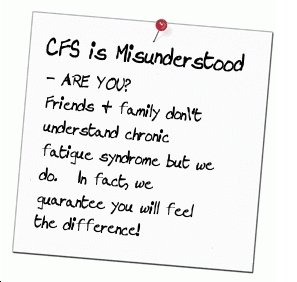Tell-Tale Signs of Chronic Bronchitis
![]()
A health article about the various forms of Bronchitis from Your Health Online the A to Z directory of dealing with Health Problems & nutritional Self Care Strategies
Bronchitis is defined as a disease with acute inflammation of the respiratory tract. The term is basically coined from the Greek words bronchos, which means windpipe, and itis, meaning inflammation.
Bronchitis takes place when the trachea or windpipe and the bronchi (both small and large) become inflamed which is likely caused by an infection or other factors.
Bronchitis has two types, acute and chronic. Acute bronchitis is mainly caused by viral or bacterial infections and from the acute word itself, it is only for a short period of time, but that is another story.
Chronic bronchitis, on the other hand, is a long term bronchial inflammation consequently followed by a raise in the production of mucus. It is also a type of chronic obstructive pulmonary disease (COPD), which is a group of respiratory diseases that hampers with normal breathing.
Chronic bronchitis can be caused by no specific factor but cigarette smoking is believed to be the major culprit of the illness. Following smoking, other causes may include environmental pollution (especially air pollution) and bacterial or viral infections.
To be considered as chronic bronchitis, the patient must experience cough and expectorations (meaning with phlegm or sputum) for no less than 3 months in a year for two successive years.
Furthermore, other factors that may cause symptoms such as TB (tuberculosis) or other respiratory health problems must be excluded.
As a category of COPD, primary symptoms of chronic bronchitis are mucus expectoration, cough, and dyspnea or labored breathing during physical exertion. These symptoms commonly deteriorate over time.
Persistent cough and mucus expectoration usually come first years before the development of aberrations in the airflow of the respiratory tract.
Dyspnea or labored breathing, due to its severity, more often than not causes interference in the patient’s day to day activities.
Loss of weight is fairly not uncommon since eating needs a certain amount of physical exertion and the sometimes only breathing itself can be energy consuming for the patient.
There will come a time when the patient will find it difficult to even participate in mild exercise because of dyspnea. As bronchitis progresses, labored breathing will be experienced by the patient even at rest.
Then the patient will become in danger of acquiring more respiratory infections and respiratory insufficiency, which consequently raises the danger for both chronic and acute respiratory failure.
Other warning signs of chronic bronchitis may include swelling of the feet, abnormal lung signs, heart failure, and bluish discoloration of the lips and skin.
Symptoms may be similar to other respiratory problems; therefore it is advisable that the patient should consult a physician.
This is due to the fact that chronic bronchitis is frequently associated with other diseases of the respiratory system such as asthma, tuberculosis, sinusitis, pulmonary emphysema, and other upper respiratory infections.
Moreover, there are numerous examinations that are utilized by the medical professionals to identify chronic bronchitis. These tests or examinations may include the following:
** Pulmonary function tests, which assist in calculating the lungs’ capacity to appropriately exchange oxygen and carbon dioxide through use of a spirometry and peak flow monitoring (PFM). Spirometry is an apparatus that is used by the doctor to evaluate the function of the lungs.
PFM is a tool that is utilized to determine the greatest speed in which an individual can exhale or blow air out of the lungs. PFM helps in assessing how the malady is being controlled
** Pulse Oximetry. This is a small apparatus that measures the quantity of oxygen in blood.
** Chest X-ray. This fairly common diagnostic test is used to create images of the internal tissues, organs, and bones unto a film.
** Arterial Blood Gas or ABG. This is a blood test that is employed to assess the lungs’ capacity to supply with oxygen and eliminate carbon dioxide. This also helps in measuring the acidity of the blood.
** CT Scan or Computed Tomography. This is an amalgamation of x-rays and computer technology to produce sectional imagery of the body. This imaging device illustrates a comprehensive picture of any part of the body.
Although once a person acquires chronic bronchitis, which usually lasts a lifetime, this illness can be controlled. Treatments are utilized mainly to alleviate the symptoms. Nevertheless, the patient can still live a comfortable life if provided with a proper management of the symptoms. It may not be curable but it is manageable.
Learn more about this subject here at your health online page that fully details the causes, symptoms, treatments and self help home remedy options for: Bronchitis![]() BACK TO “Your Health Online”
BACK TO “Your Health Online”
the A to Z directory of dealing with Health Problems & Self Care Strategies for natural remedies to your health issues.
==========
Further reading through our articles on health issues will give you a body of information that will help you decide what options you have to deal with the underlying causes of your problem through giving your body the nutrition products that will assist you body to heal from the inside out.

Subscribe to “Your Health Success” newsletter
Terms of Use | Privacy Policy |Disclaimer | Free Health Book
the A to Z directory of dealing with Health Problems & Self Care Strategies for natural remedies to your health issues.

Subscribe to get your weekly "Health Success Magazine" with a new complete & comprehensive Health Report in every edition!

to “Your Health Success”
our weekly F’R’E’E’ Newsletter
If you would like a free no-obligation private consultation or to contact Warren Tattersall for more information, please click here >> Contact Us

Click the books above to learn more about how we treat CFS naturally, to get your life back!
You will find many assorted Health Reports available for download free to you on this website!
Our free Health Success Reports are each available for you to download when you subscribe to receive them and their 7 part eCourse.
You can unsubscribe at any time, but we are sure you will want to receive all the email lessons of these informative ecourses.
Read more HERE to select the REPORT subjects of most interest (or concern) to you.







